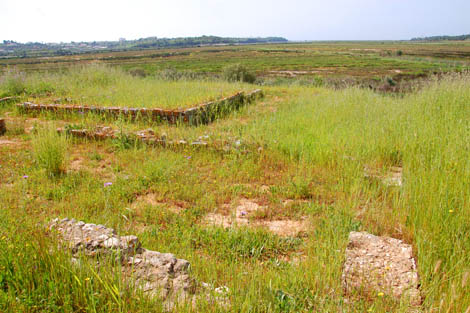 The Roman mosaics of Abicada, considered among the «richest in the Algarve and the country», no longer cover the floor of the villa maritime, classified as a national monument, whose traces can still be seen today on the small peninsula on the edge of the Ria de Alvor, in the municipality of Portimão.
The Roman mosaics of Abicada, considered among the «richest in the Algarve and the country», no longer cover the floor of the villa maritime, classified as a national monument, whose traces can still be seen today on the small peninsula on the edge of the Ria de Alvor, in the municipality of Portimão.
Because they were deteriorating day by day, subject to the sun and rain (and even vandalism), in 2010 and 2011, meticulous work by the specialists of the company Palimpsest allowed to raise, with all care and rigor, the mosaics that they covered the main rooms of the Roman house.
Today, the square meters and meters of mosaics formed by small colored stones, the tesserae, are deposited in the Portimão Museum, where it is expected that they will be the target of conservation and restoration work and that later they will be the subject of a major exhibition.
The survey of the mosaics, carried out from October to December 2010 and then from July to September 2011, was just one of the two major interventions that the Roman villa of Abicada received in more recent times.
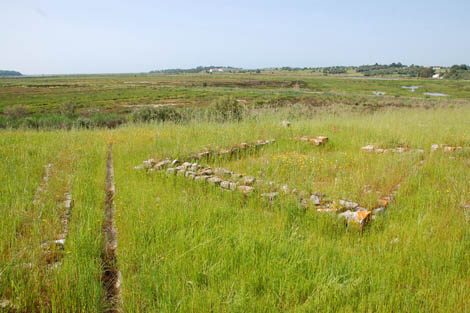
The other was the construction of a concrete wall to support the entire area where the residential part of the villa (the only one that was excavated and belongs to the Portuguese State). Due to the type of clayey soil, the vicinity of the Ria de Alvor and the construction of a complex of cows and silos, more or less clandestine, immediately north of the ruins, the villa Roman da Abicada has come to slide downhill, causing severe damage to its nearly two-thousand-year-old structure.
«To preserve this entire site, a support wall was built on the south side of the estuary, anchored by micropiles ten meters deep», revealed Rui Parreira, Director of Cultural Goods services of the Regional Directorate of Culture of the Algarve, during a conference precisely on the future of Abicada, which took place on April 18, International Day of Monuments and Sites, at the Portimão Museum.
A drainage network was also installed, to prevent rainwater from continuing to infiltrate and cause further damage to the structure, some of the old walls and walls were stabilized, and the mosaics covering the floors of the two rooms were removed. thirds of the house.
In these three interventions, the Regional Directorate of Culture of the Algarve invested around 120 thousand euros. But there is still a lot to do for the villa Abicada can fulfill its cultural and tourist function. But what is missing to implement, for example, the plan to create an interpretation center at the archaeological site and to create a structure that covers the archaeological remains, protecting them from the elements and allowing the mosaics to be returned to their original location, after the restoration? Lack of money…
Wrong ideas and the future of Abicada
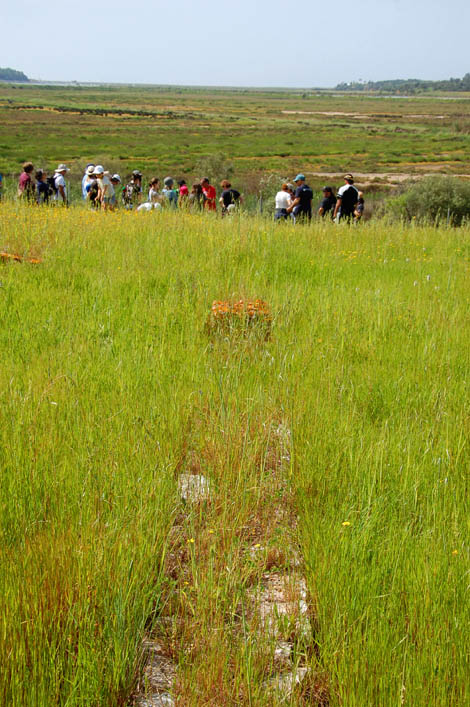
On villa Roman da Abicada, founded in the XNUMXst century AD and occupied at least until the XNUMXth century AD, there are two wrong ideas that are often shared on social networks: first, that the ruins belong to the Portimão Town Hall. That's not true: they belong to the State, being currently supervised by the Regional Directorate of Culture.
Another misconception is that, in recent years, nothing has been done to preserve them, which is why they are abandoned and subject to vandalism. That's not true either, though only in part. Vandalism is visible, all the more so as the monument is not guarded and the metal gate that closed the fence was recently stolen.
But villa, despite the herbs that invade the perimeter, it has been, as already seen, the target of large investments by the State, to guarantee its preservation. And only these investments prevent it from being completely destroyed today.
Last Thursday, at the conference at the Museum of Portimão on the theme «Villa Romana da Abicada: What Future?”, were speakers Rui Parreira, Eduardo Porfírio, from the company Palimpsest, responsible for the most recent archaeological work done at Abicada, José Gameiro, director of the Portimão Museum, and Carla Melo Pereira, councilor for Culture in Portimão .
Eduardo Porfírio described the work done to identify the pathologies that affected the mosaics, one of which had mainly to do with the fact that the builders of the villa not having used the usual layer of mortar as a substrate for laying the tiles. The result is that the small tesserae were placed directly on the clay soil in most of the floor of the Roman house, which created additional conservation problems. Why did the Roman builders do this? You will probably never know.
Then, the clayey soil, which swells with rain and opens deep cracks in dry weather, is also not conducive to the conservation of archaeological structures. In addition, as Rio Parreira pointed out, when in the 40s of the last century «Dr. José Formosinho carried out the first large campaigns of archaeological excavations», exposing the mosaics, they left the protection that the fact that they were buried in spite of everything. guarantee, to be subject to sun, rain, degradation. "These floors were not built to be exposed to the elements, but to be under tile, on the floor of the rooms," added the archaeologist.
Herbs and Views
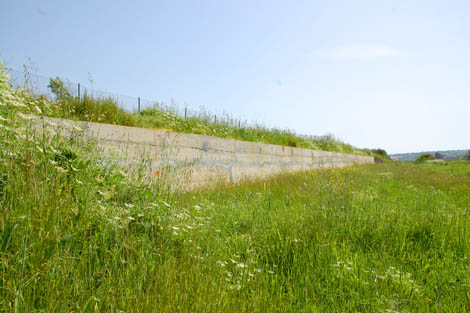
Rui Parreira considered Abicada as “a remarkable archaeological site, because it is rare. Contains one of the largest sets of mosaics in the entire Algarve. It is also a place for privileged observation of the landscape».
It was precisely this that, last Sunday, culminating four days dedicated to heritage in the Algarve, in the commemorations of the International Day of Monuments and Sites, it took around fifty people to the Abicada, for a walking tour promoted by the Regional Directorate of Culture , which protects the monument, guided by archaeologist Rui Parreira and biologist Filipe Bally Jorge, from the Portimão Chamber.
When they arrived there, the participants on the tour suffered a disappointment, because what is left of the walls of the villa You could barely see through the grass that had grown in recent weeks and, in many places, reached more than a meter in height.
The only thing that saved the tour was the view of the Ria de Alvor, a little different from the one the Romans who built the Abicada had, but still beautiful. The views and explanations of the two guides – one about the fauna (namely birds) and flora of the Ria de Alvor, the other about the problems and experiences of those Romans who, nearly 2000 years ago, settled in this small peninsula almost on the edge certainly to take advantage of the ease of shipping products by sea and to explore the richness of the sea and the fertile land of the neighboring floodplains.
Rui Parreira also spoke of the berth for small-draft ships that was close to the house, in those Roman times when the estuary was deeper and navigable.
But in fact it took a lot of imagination to get a glimpse of those Roman times, when the Abicada was the center of a thriving property that exploited seafood and land. Today, the ruins are barely visible among the grass and right next to it, the old agricultural exploitation from the middle of the last century, which has been abandoned for a long time, is also in rapid ruin.
What is needed is money
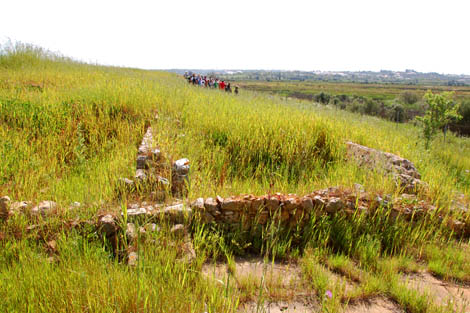
What is the solution? Of the entire zone, only the rectangle of 80 by 30 meters surrounded by a metallic fence belongs to the State. The rest is privately owned and belongs to a family in the north of the country that has been intending for years to urbanize the area and transform it into a resort tourist, with a small hotel, villas and possibly a golf course. The owner company is, in fact, one of the two interested in the competition for a Tourism Development Center (NDT) that the Portimão Chamber has just launched.
«For several years, this regional department has been in contact with the company Aquazul. Recently, there was a new contact», admitted Rui Parreira. If this company wins the tender for the NDT and can move forward with its project, then what is expected is that «Abicada, integrated in this private property, will be managed by the public administration in a partnership between the Museum of Portimão and the Regional Directorate of Culture. A partnership in which the private owner is a privileged partner guaranteeing access to the villa Roman and the treatment of the surroundings», added Rui Parreira, at the conference in Portimão.
In other words, the hope is that the owners of the Quinta da Abicada, if they win the tender for the NDT, will have as one of their counterparts the obligation to finance the restoration and musealization of the Roman villa.
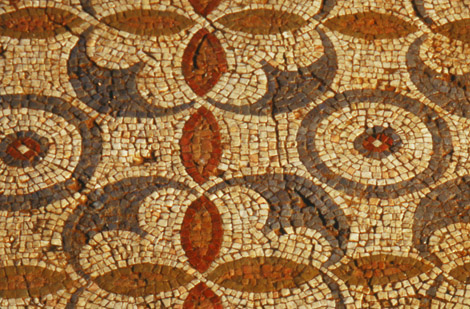
And what will happen to the mosaics, which are now deposited in the Museum of Portimão, awaiting restoration for which there also seems to be no money?
José Gameiro, director of the Museum, revealed that the objective is “to make an exhibition about the mosaics, but also approaching the daily life of the Roman world, of the Abicada itself and also to understand a little better how these mosaics were made”. A date has not been set for this exhibition, as, before that, the mosaics deposited in the Museum need restoration and other interventions. And for that there is, for the time being, no money.
The councilor of Culture Carla Pereira, who in her adolescence even worked at Abicada, in the «ATL of the Portimão Chamber» and therefore expressed her «affective bond» to villa Roman, guaranteed that there was “a policy of cooperation and interest on the part of the Municipality of Portimão”.
The councilor also challenged the Regional Directorate of Culture to make a "future protocol for safeguarding, conservation and dissemination", which defines a "joint management strategy, after the recovery of the monument".
Finally, Rui Parreira guaranteed that «the plates with the mosaics preserved in the Museum will one day return to the site. That is the intention, or the large thousands of euros spent on the consolidation of the archaeological site would not be justified».
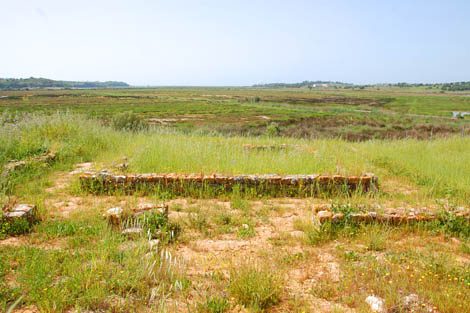
The director of cultural goods services at DRCultAlg ended by saying that "Abicada is so privileged as a place that it cannot be just a memory and a collection of movable objects kept in the Museum." For now, in fact, the monument is little more than that…
Learn here more on Villa Roman da Abicada, national monument since 1940.
See more photos about the ride to Abicada here.

















Comments